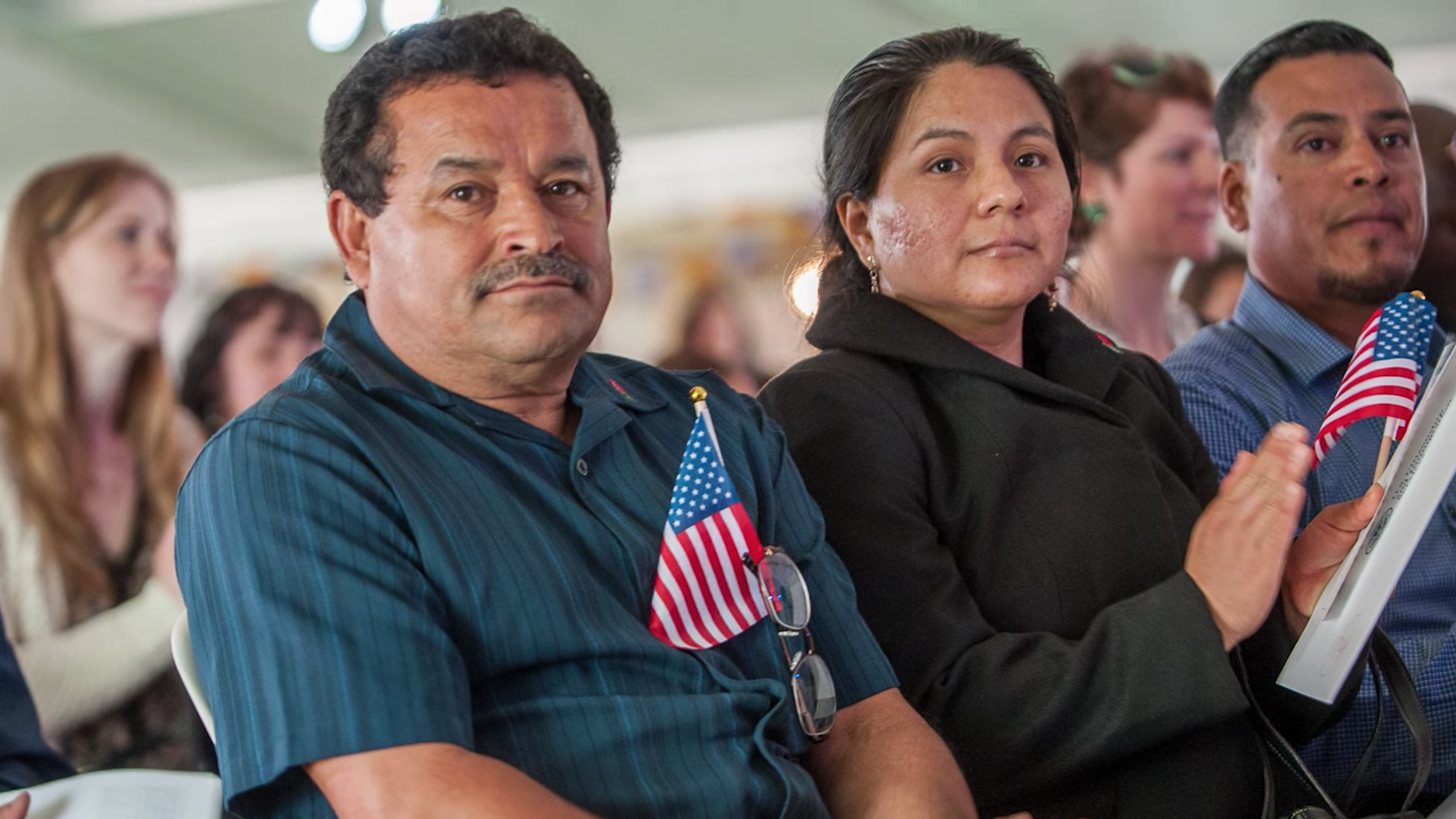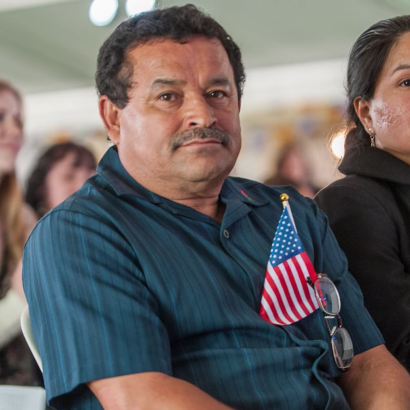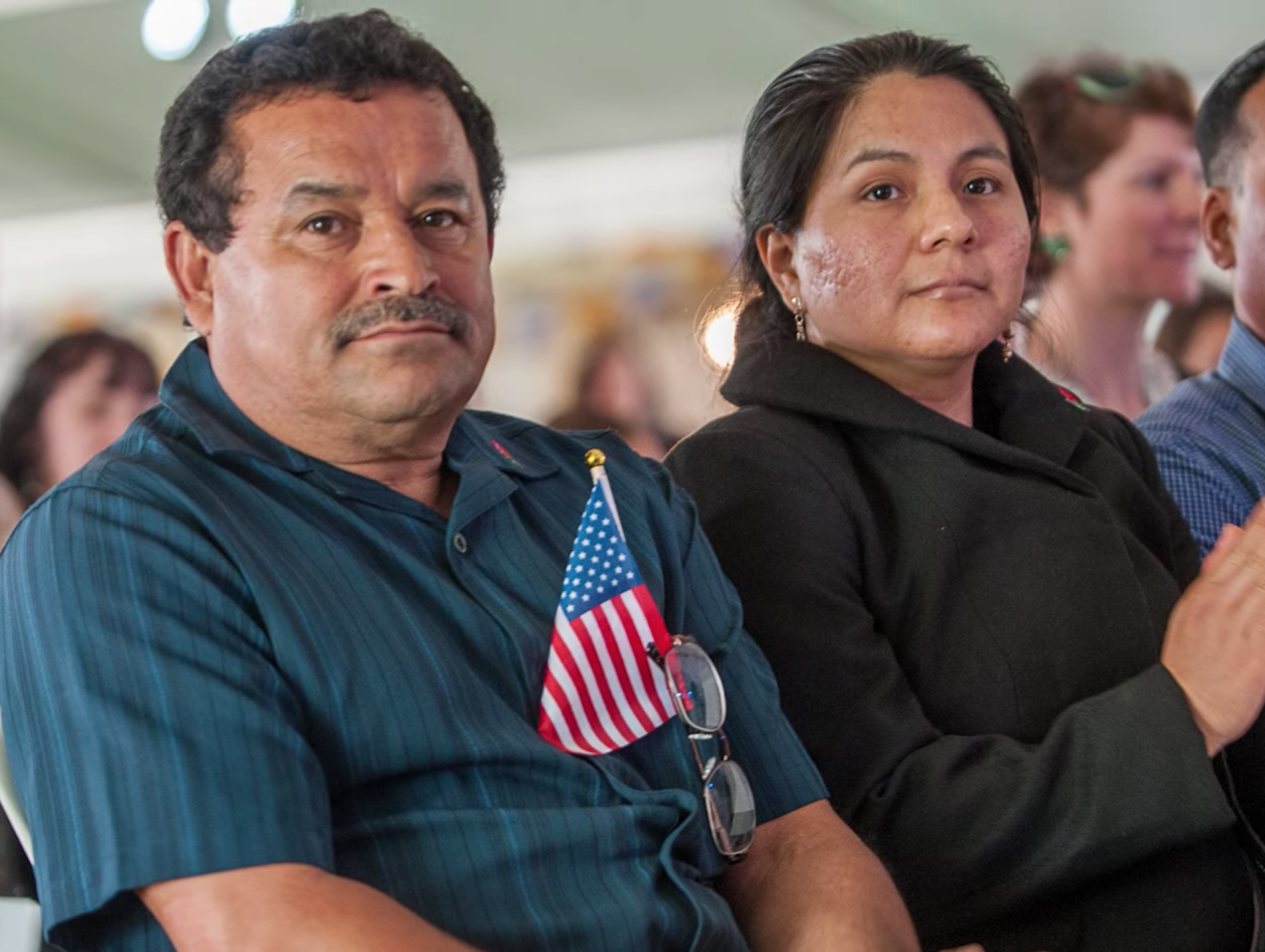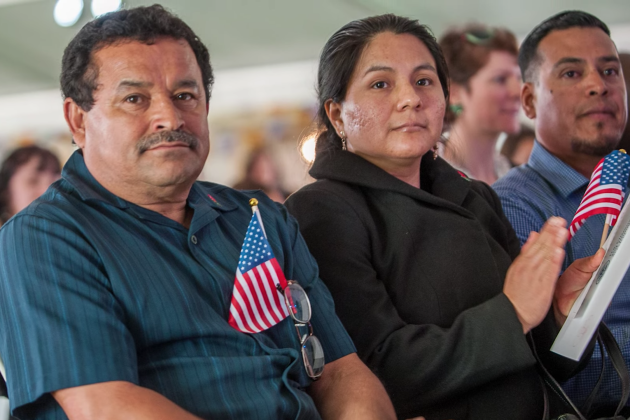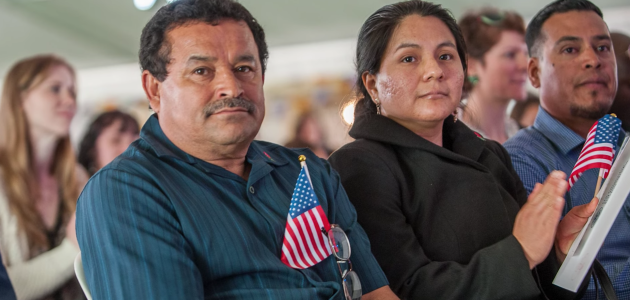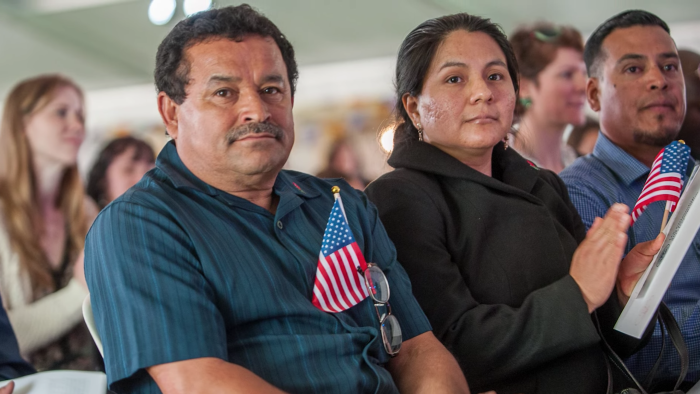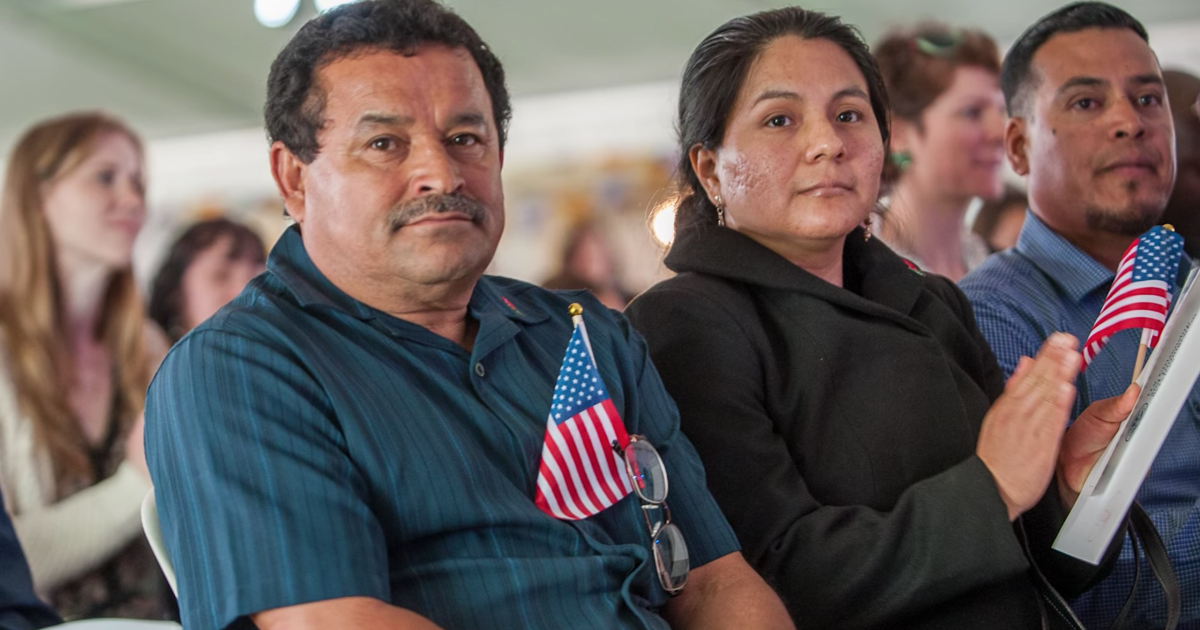- Politics, Institutions, and Public Opinion
- Public Opinion
- Understanding Public Opinion
David L. Leal is an adjunct senior fellow at the Hoover Institution and participates in Hoover’s Center for Revitalizing American Institutions. He is also a professor of government at the University of Texas at Austin. He spoke with Chris Herhalt about the Latino vote moving to the right, and the misconceptions both parties hold about Hispanic voters.
Chris Herhalt: Can you explain what you call the Latino assimilation paradox?
David L. Leal: I created this term as a way to explain some of the big-picture dynamics involving the Latino vote, particularly the rumors, misunderstandings, and wishful thinking that have circulated within both Democratic and Republican circles.
For many years, the common view of how demographic change would shape politics was the theory of “demography as destiny.” This predicted that as the Latino population grew and the American population more generally diversified, the Democratic Party would be the inevitable beneficiary. All it had to do was sit back and wait for an unstoppable demographic dividend at the ballot box. The flip side was that Republicans would eventually be reduced to permanent minority party status. The logic was that as California went, so would go the nation. This belief was shared by Democrats and Republicans, although it gave confidence—some would say complacency—to the former but heartburn to the latter.
There have been good reasons to doubt this rather oversimplified view of how population change would shape politics. And by the Trump era, real-life electoral results and polling data were showing that Latinos—and also many immigrants and other minority groups—were starting to move toward the Republican Party in a slow but sure way. This was contrary to almost everything that activists, academics, journalists, pollsters, politicians, and pundits, Republicans included, were expecting.
Many are now trying to understand why Latinos are moving toward the GOP. My answer is that this is just the latest chapter in the great American assimilation story. We do not have time here to review the scholarship, but to take one example, the 2005 book Italians Then, Mexicans Now studied socioeconomic progress among second-generation immigrants in two different historical eras, and the title says it all. Assimilation is complex, of course, but it was real and consequential then, and it is real and consequential now.
Politically, across the last century, we find that new waves of immigrant groups often begin as strong Democrats, but over time, they slowly but surely move toward the Republican Party. This was true broadly for all of the white Catholic ethnic groups of the late nineteenth and early twentieth centuries: Italian-Americans, Polish-Americans, Irish-Americans, and others. The white Catholic vote is today majority Republican, but when John F. Kennedy ran in 1960, it would have seemed self-evident that Catholics would overwhelmingly and indefinitely vote Democratic.
But assimilation did its work, despite longstanding populist rumors to the contrary. Today, although the evidence for assimilation remains strong, both parties have denied, doubted, and disparaged its effects, although for very different reasons, and this is where we find the paradoxes—one for each party.
Democrats are suspicious of assimilation, and if they were honest, they would admit they do not quite want it to happen, or only in limited ways. Politically, they need minority groups to remain apart from the mainstream, which they feel in their bones is a predominantly center-right space. Because assimilation reduces the differences between Latinos and whites, it undermines this Democratic electoral strategy. Democrats may claim to “celebrate diversity,” but what they really want to celebrate is a rainbow coalition of racial-ethnic minority groups that join progressive whites in voting Democratic.
Although most academics are Democrats, the scholarship on Latinos has done few favors for the party because it focuses on what we might call the “politics of difference,” meaning a search for public opinion and political behavior differences between Latinos and whites. Scholars have largely ignored a “politics of similarity” approach, which would examine the growing number of shared Latino-white perspectives and experiences.
This leads to the assimilation paradox for Democrats: they claim to be pro-diversity but in reality are uncomfortable with diverse groups moving toward the economic, political, and social mainstream, which they fear will increase support for the Republicans.
Republicans, for their part, have sometimes claimed that Latinos are unassimilating immigrants, welfare seekers, socialists, and holders of antithetical cultural values. Nevertheless, Ronald Reagan was ahead of the game when he observed that “Latinos are Republicans. They just don’t know it yet.” And others, such as George W. Bush, also realized that Latinos are a great target audience for the GOP.
Today, real-world electoral data are indicating that Reagan and Bush were right. In the future, historians will wonder how anyone could have thought that this aspirational, entrepreneurial, and traditionalistic group of Americans-by-choice was somehow “socialistic” or whatever. Nevertheless, many conservatives were caught up in rumors and misunderstandings and thereby missed the clear Latino movement to the mainstream.
This leads to the assimilation paradox for Republicans: they found themselves in the position of denying the very assimilation that was in reality moving Latinos toward their party and undermining Democratic electoral hopes.
Chris Herhalt: Your articles show that the trend line is clear. Are both camps starting to accept this?
David L. Leal: I think both parties are beginning to accept reality, albeit reluctantly among Democrats and slowly among Republicans.
For a long time, activists and academics misunderstood Latinos as current or future progressives, but the best way to understand them is as New Deal voters. They began by caring about bread-and-butter economic issues, but as they assimilated over time, they became more politically similar to the American mainstream. That’s why they remind me of the Italian-Americans of the twentieth century, which was also a New Deal electorate that would change parties over time. Today, while Latino communities are diverse, they are not enthusiastic about the priorities of contemporary coastal progressives and will not become the “Latinx” voters of the left’s dreams.
In my own field of political science, my sense is that scholars are beginning to understand—maybe more in their heart-of-hearts than publicly—that the research agenda on Latinos has been on the wrong track for several decades and that key topics have been neglected and marginalized. Religion, for example, has always been a secondary, if not tertiary, field of study in political science—including in Latino politics—which is astounding because it should be front and center of any analysis of American politics. But academics sometimes study what they know and what they like, and most do not understand religion and many do not think they like it.
On the Republican side, the old myth that “Latinos don’t assimilate” is being replaced with a new awareness that many Latinos are moving to the GOP. In my view, this has little to do with the institutional party and much to do with Latinos at the grass roots seeing a lot to like about Trump and a more heterodox GOP. This has happened despite the misunderstandings and stereotypes of Latinos that have unfortunately circulated in conservative circles. Republicans need to understand that Latinos not only want the American dream, they want to strengthen it. We can find them supporting the core institutions that sustain the nation, ranging from the workforce to the family, and from churches to the Marines.
Democrats would love to hear some good news about Latino voters, and if there is any movement back to the Democratic Party in the midterm elections, many activists will be quick to claim the Latino vote is going back to “normal.” But as Alvaro Corral and I argued in a recent essay, the Latino population is changing from within, and the Democrats need to understand that you can’t go home again.
Chris Herhalt: Now, aren’t there a few elements of the Trump agenda that could stall what you’re seeing? Not just the general increase in enforcement of immigration law—there’s a focus on building deportation cases simply because of men’s tattoos, which generates a stereotype. And there’s the economic agenda. It hampers some industries where a lot of Latino voters work. A new poll mentioned that Trump got 46 percent of the Latino vote in November, but it said he has only 27 percent support among Latinos now.
David L. Leal: As Latinos move to the mainstream, they will increasingly evaluate American politics according to mainstream issues. The economy is one of the most important, and it is a key reason why so many Latinos voted for Trump. In Texas, for example, many work in the energy sector and were suspicious of the Green New Deal and thought Republicans were the party to trust as stewards of the economy. However, if tariffs and trade wars increase inflation and lead to a recession, Republicans have to be prepared for an electoral reaction. Americans often vote retrospectively, meaning they ignore promises about the future and ask the classic question of whether they and the economy are better off now than two or four years ago.
About immigration, we read stories about deportations due to mistakes, or because of particular tattoos, or for other reasons that many Americans would look at and ask, “Really, is this what we want?” On the other hand, these may prove to be some of the errors and false steps we might expect when a policy is implemented that has a lot of differences from previous approaches. We’ll have to wait and see how the policies play out.
Furthermore, contrary to rumor, Latinos are not necessarily very liberal on immigration issues. In the first national survey of Latinos in 1989–90, about two-thirds of all respondents said there were too many immigrants in America. Other research has shown that Latinos have qualified and complicated views of immigration, and many, of course, take seriously law and order issues. The Border Patrol has the largest share of Latino employees of any organization in the federal government, and despite some contentious claims, Latino opinion cannot be characterized as favoring anything like “open borders.”
I have argued that a way to understand Latino views about immigration is to distinguish immigration policy vs. immigration politics. The former involves good-faith discussions and debates about, for example, how many and which types of immigrants we should admit, and how immigration laws are best enforced. Reasonable people can disagree about this. By contrast, immigration politics is when immigrants are used as political footballs, and in ways that imply all Latinos are somehow not fully American. When the GOP approach to immigration moves away from immigration policy and towards immigration politics, my view is that the party leaves Latino votes on the table.
Furthermore, if we actually deport millions of individuals, then lots of Latino voters are going to know them. They will be family, friends, co-workers, churchgoers, and weekend soccer league players. Most will have done nothing wrong besides wanting to be Americans despite “big government” laws that arbitrarily criminalize their presence. When Latino voters know such deportees, who may have been forced to leave behind citizen relatives, who might not have had due process, or who were swept up because of their tattoos, then the immigration issue might become a bigger part of the voting decision for Latino citizens than it is now.
Chris Herhalt: Going into 2026, I’ll start with the Democrats, because I think what you touch on in some of your writing is they’re overconfident. They’ve taken the Latino vote for granted, but increasingly, it seems as if they’ve taken a lot of groups for granted. What advice would you give them?
David L. Leal: I see three related problems facing the Democrats. First, they have assumed a rainbow coalition for decades, but some groups within that putative coalition believe they have been taken for granted. A longstanding claim is that the Democrats mostly ignore Latino voters until an election is almost over, and then entirely ignore them once in power. Democrats may claim this is an exaggerated view, but some progressive Latino community organizers see the party as more willing to talk-the-talk than walk-the-walk.
This leads to the second problem—what do Latino voters want? What would “walking the walk” actually constitute? For years, the implicit belief has been that Latino voters favor a unique set of policy issues, and the parties, particularly the Democrats, should make promises about those issues. What are these Latino-specific issues? Immigration? Bilingual education? Affirmative action? But maybe Latinos just want what everybody else wants and not what progressive activists want. If you ask Latinos about the most important issues in an election, they typically point to the economy, jobs, education, war and peace, and other familiar responses. All these fundamental issues top the Latino policy agenda, just as they top the non-Latino policy agenda. Looking for Latino-specific, magic-bullet issues is a path to nowhere.
Third, Latinos are increasingly using what scholars call their “agency” in politics, which means they are making up their own minds about which party to support regardless of what community “leaders” want. Democrats are frustrated because they see themselves as the only party trying to concretely help Latinos via a social program and civil rights agenda, but Latinos may be less interested in this traditional approach.
I’m reminded of the book What’s the Matter with Kansas? from 2004. The author wondered why Kansas voters went from Democrats to Republicans, especially with the Democrats supporting social programs that would provide practical assistance to many state residents. His answer was that voters were distracted by hot-button social issues into voting for the party that supported Wall Street over Main Street. Be that as it may, we might conclude that citizens in a democracy can choose what to value, regardless of what others see as their “objective” best interests.
Latinos, like voters in Kansas, are increasingly making up their own minds about which party to support, and the Democrats are not benefiting. Because Democrats think Latinos should vote for the party because of its “we’re from the government and we’re here to help” approach, they tend to see Latino Republicans in a negative light, such as religious extremists, misinformation victims, influenced by machismo, or trapped in a “false consciousness.” Democrats have a difficult time understanding Latino motivations, and doing so will be a considerable challenge for the party in future years.
Chris Herhalt: What about the Republicans?
David L. Leal: The insider Republican worry was that Trump might win the 2024 election but the party would be left holding the bag—that is, if tariffs, trade wars, and mass deportation turned out to be unpopular. A short-term victory might therefore be followed by some long-term, negative electoral consequences. I think it’s too early to predict the future; the mainstream media are busy hyping any indicator of declining public support for Trump, but the midterm elections are a year and a half away, which is an eternity in politics.
If I were a Republican consultant looking at electoral maps, I would see growth opportunities in many areas, and much of this is due to the growing support of the party among Latinos, immigrants, and other minority groups. But Republicans should not be complacent. They cannot assume that current trends will continue. Democrats have been paying the price since 2016 for assuming that demographic change would automatically accrue to their benefit. Republicans might think that recent trends are the wave of the future, but they may find that a recession, inflation, and mass deportation can change the direction of travel fast.







